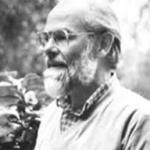What Is a “Spirit-filled” and “Spirit-led” Church? Part Two
In Part One I described a Spirit-filled and Spirit-led church; there I explained the marks or characteristics I look for in deciding whether a church more or less deserves that recognition. Here I will prescribe how a church might move in the direction of becoming Spirit-filled and Spirit-led. Everything I say here assumes the church in question is evangelical in the broadest sense of being Christ-centered and gospel-centered.
First, a church must acknowledge that being Spirit-filled and Spirit-led is gift, not achievement. The descent of the Spirit upon the church at Pentecost was not a reward; it was God’s gracious gift. All the disciples did was obey Jesus by waiting for it.
Second, however, we can also assume that in the period leading up to Pentecost the disciples were waiting for it with openness and anticipation. A church that wishes to be Spirit-filled and Sprit-led must be open to that.
Third, being open to becoming Spirit-filled and Spirit-led often requires removing dispositions that hinder it. Here are some dispositions that I observe hinder churches from becoming Spirit-filled and Spirit-led: fear of change and risk, unwarranted prejudice against other Christian traditions, tradition-boundness, a divisive spirit that thrives on conflict, harboring sin within the leadership or a significant portion of the membership, idolatry, and exclusiveness based on race or class.
Fourth, being open to becoming Spirit-filled and Spirit-led requires desire. A church that wishes to become Spirit-filled and Spirit-led must want it. And wanting it requires “tarrying” for it with prayer and making at least symbolic gestures that can break through the barriers that hinder the Spirit’s fullness. By the latter I mean doing things collectively that represent openness to the change inevitably resulting from the rushing in of the Holy Spirit. For example, a church that refuses to lift hands in praise even while singing “we lift our hands” is unlikely to be open to the changes that will result from becoming Spirit-filled.
Fifth, being open to becoming Spirit-filled and Spirit-led requires overcoming cessationism—whether “official” or “implicit” (practical). A church that wants to be Spirit-filled and Spirit-led must acknowledge the sovereignty of the living Holy Spirit to give whatever gifts the Spirit wishes to give. Chasing the Holy Spirit into the past (as to supernatural activities) and into the Bible (the Spirit cannot speak outside of Scripture) inevitably closes a church off from being fully Spirit-filled and Spirit-led.
Sixth, a church that wishes to be Spirit-filled and Spirit-led must open up spaces for the Holy Spirit to move in unusual and unexpected ways. If everything a church does is structured to avoid the spontaneous, the unpredictable, little room is allowed for the Spirit to act. Structure is good, but it must not produce a static state that closes down the dynamic. When planning worship or meetings of any kind, a church that wishes to be Spirit-filled and Spirit-led must leave room for the Spirit to speak and act—within biblical boundaries, of course.
Seventh, a church that wishes to be Spirit-filled and Spirit-led must adjust its focus from institutional preservation and enhancement to participation in the mission of God in the world.
None of this implies that a church wishing to be Spirit-filled and Spirit-led must become Pentecostal or charismatic—at least not in the sociological senses of those categories. There is no necessity of speaking in tongues or healing lines or praying for people to be “slain in the Spirit.” However, a church that pre-determines that emotional manifestations of the Spirit’s work are always forbidden is not likely to experience the fullness of the Spirit. The coming of the Spirit is often accompanied by physical reactions. The latter are not necessary and should not be sought, but a church that is closed to them, that treats them as sinister or weird, is unlikely to experience the fullness of the Holy Spirit.
I suspect that many, perhaps most, churches are addicted to comfort. They do not want anything to happen that makes them uncomfortable. That is automatically to exclude the full range of the Spirit’s possibilities. A church that wishes to be Spirit-filled and Spirit-led must be open to discomfort, to growing pains. So, what are some strategies, practices, that can promote becoming a Spirit-filled and Spirit-led church?
First, teaching about the Holy Spirit’s work is important. A place to begin would be a sermon series or adult Sunday School series on the Acts of the Apostles that does not begin with the assumption that the things that happened then do not happen now.
Second, exposure to Spirit-filled and Spirit-led ministries can be helpful. Often the Spirit is moving in amazing ways “on the mission field” among Christians affiliated with the church’s own denomination or tradition. Show a video clip or invite a missionary (sent or received) to speak about the Holy Spirit working among people in a different culture. Then raise the question “Why not here, too?”
Third, begin a non-Sunday morning service of worship where openness to the surprising work of the Holy Spirit is evident—with teaching and worship aimed at being open to the Holy Spirit that is intentional.
Create a “Life Group” (or whatever it may be called) focused on the gifts of the Holy Spirit (all of them) and practicing being open to and receiving unusual gifts of the Holy Spirit.
Create a “time-space” in worship for lay people to exercise gifts of the Holy Spirit or for the Holy Spirit to move among the people. This usually requires the worship leader to sit down. (Otherwise the people tend to wait for the worship leader to do something.)
















